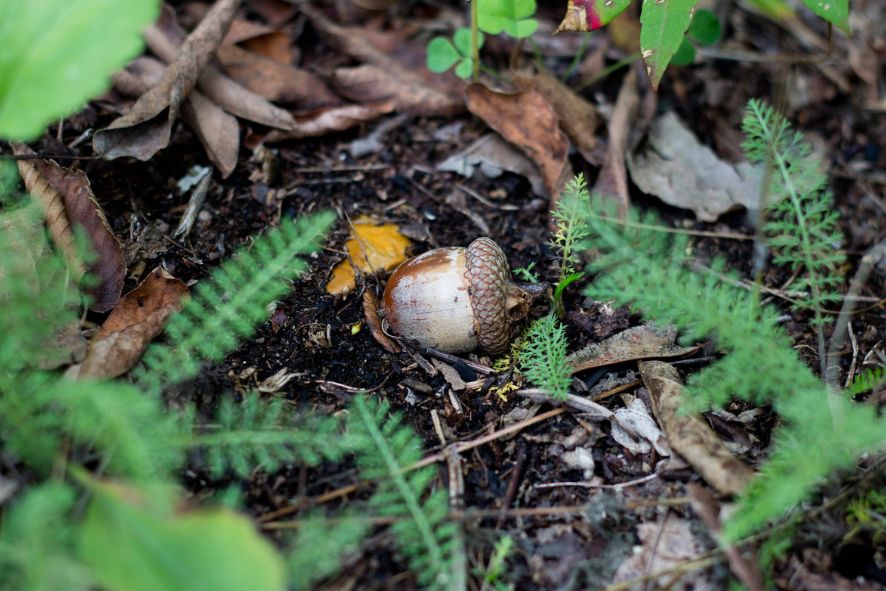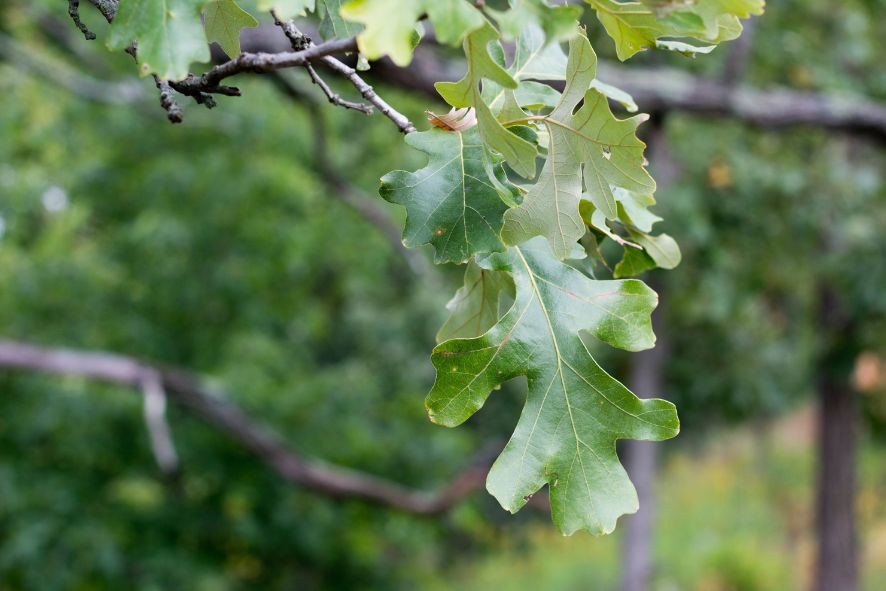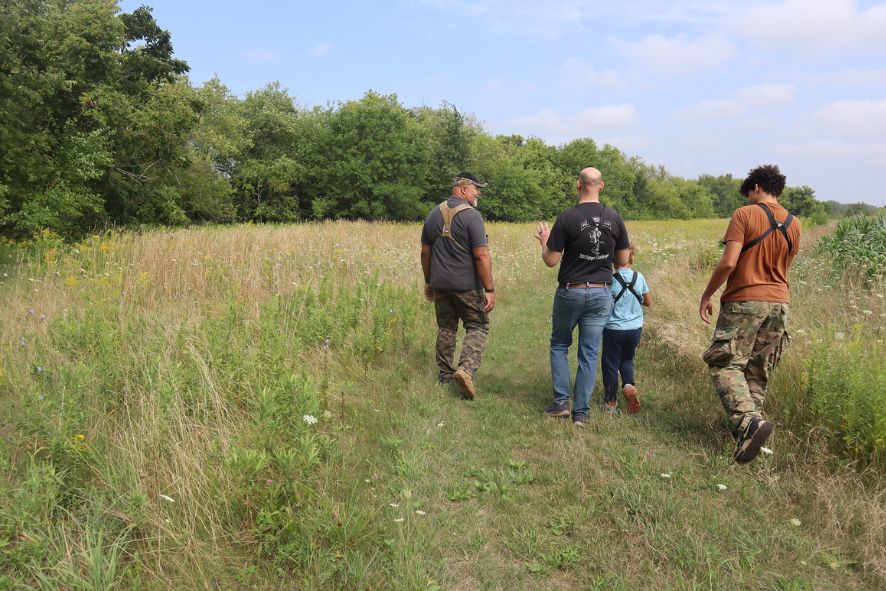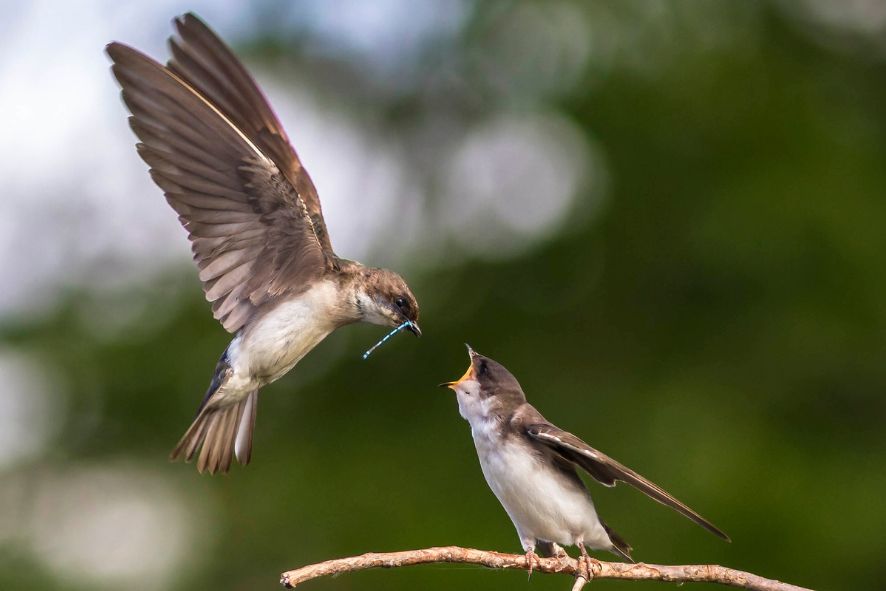The Natural Resources Foundation of Wisconsin’s staff and Board of Directors are proud to announce our new 2024-2027 strategic plan! We’re continuing and deepening our focus on landscape-scale conservation, connecting more people with nature across the state of Wisconsin, and making some efficiency improvements behind the scenes as well.
Read more about our plans below. Thank you for being a part of this important work.

An acorn, like this one on the forest floor, can one day become a big oak. The plan is like that acorn, an important step on the way towards NRF’s strong, impactful future. Photo by Shelly Torkelson
About the 2024-2027 Strategic Plan
The Natural Resources Foundation of Wisconsin has played a critical role in the conservation of our state’s natural wonders for nearly four decades. Building on our past impact, we have crafted a new vision and direction for our next four years of work. We are expanding our work on landscape-scale conservation and our commitment to equitable access to nature, while ensuring that we have the team and resources needed to achieve our ambitious goals.
Our Mission
To protect Wisconsin’s lands, waters, and wildlife by providing funding, leading partnerships, and connecting all people with nature.
We’ve been doing that work since 1986. And today, we lead conservation across the state with a bold new vision.
Our Vision
A future where Wisconsin’s flourishing ecosystems are protected, sustained, and cherished by diverse communities.
Our new plan has three goals that will guide our work:
Protect Wisconsin’s lands, waters, and wildlife by
- facilitating landscape-scale conservation in Wisconsin and
- supporting a strong network of partners
Engage diverse communities in conservation by
- increasing access to NRF’s outdoor experiences
- connecting diverse communities to nature, and
- creating and growing professional pathways into the conservation field
Strengthen our capacity to achieve our mission by
- strengthening and diversifying our teams
- improving our internal systems, and
- expanding financial support
Throughout history, communities have triumphed over threats. With your support and partnership, I’m confident we can confront the range of challenges we face and create a world that our children will thrive in.

Oak trees, like this one at Lulu Lake State Natural Area, and oak savanna landscapes are important to biodiversity in southern Wisconsin. Photo by Shelly Torkelson
Protecting Wisconsin’s lands, waters, and wildlife
The two main ways we will be carrying out this part of the plan are by facilitating landscape-scale conservation in Wisconsin and supporting a strong network of conservation partners.
Landscape-scale conservation
To meet Wisconsin’s growing conservation needs, NRF is committing to conservation work at a larger scale. Plants and animals don’t see human map-based lines separating farms, cities, and protected areas. They only see habitat. Our wilderness, forests, prairies, wetlands, and other habitats need connectivity in order for our natural world to thrive. By collaborating and building numerous partnerships, we can accomplish landscape scale projects that cross all boundaries. We are working with a new landscape collaborative that spans multiple conservation organizations. Also, we are piloting landscape-scale projects that build on the work we’ve been doing over the last few years in Wisconsin’s highest-priority regions for biodiversity.
Supporting a strong network of conservation partners
Our conservation partners are everything. We can’t protect nature in Wisconsin without them. Over the next four years, we are updating our grantmaking and becoming even more of a learning resource for our conservation partners across the state.

Prescribed burn at Ducham Creek in the Lower Chippewa River Basin. Photo by Blake Olson, WDNR
Engaging diverse communities in conservation
The more people who can get out and enjoy nature, the more people there are who will value it. The more people who value it, the more who’ll be inspired to protect it.
Over the next few years, we hope to engage more diverse communities in conservation by increasing access to NRF’s outdoor experiences (our popular Field Trips, Wayfarers young professionals group, and the Great Wisconsin Birdathon event), connecting diverse communities to nature, and growing professional pathways into the conservation field.
Increasing access to NRF’s outdoor experiences
We want as many people to get outdoors and enjoy nature with us as possible. Some actions we will be exploring include increasing access to transportation, carpooling, and binoculars. We would also like to provide better accessibility information (such as trail surface info in the Field Trip Guidebook), and expand outreach into the Milwaukee area.
Connecting diverse communities to nature
To reflect how important this is to us and ensure we have the staffing we need to focus on this work, we plan to create a community outreach department at NRF. We also plan to establish official organizational best practices for outreach to diverse partners.
Growing professional pathways into the conservation field
Our Diversity in Conservation Internship has grown to become an important way for us to help diversify the conservation field. We know that conservation efforts have a greater impact when they value diverse voices, perspectives, and approaches. We plan to strengthen the Diversity in Conservation Internship Program to support “conservation-curious” college students from underserved communities in new ways.

Christopher Kilgour (left), founder of “Color in the Outdoors” leading an NRF Field Trip in 2023 called “Diversity in the Field: Intro to Hunting & Fishing for Beginners.” Photo by Emma Schatz
Strengthening our capacity to achieve our mission
We’ve got big plans, and we’ll need strong systems and a strong team in order to make them happen. We plan to make sure we can achieve our mission by strengthening and diversifying our teams, improving our internal systems, and expanding financial support for NRF.
Strengthen and diversify our teams
We plan to create a “People and Culture” department to enhance our positive, inclusive office culture. Additionally, we would like to recruit more members of our Board of Directors from a wider variety of backgrounds, and incorporate new trainings for our staff and board.
Improve our Internal Systems
We’ve got some spring cleaning to do! Our 38-year-old organization needs to tidy up our procedures, software systems, and sustainability practices in order to make our work more efficient.
Expand financial support
Why support NRF? What is landscape-scale conservation? Why is it important to get kids out in nature? We plan to make sure donors have the information they need as they decide what aspect of conservation inspires them the most. And, to support the bigger impact we’ll have on conservation in Wisconsin as this strategic plan moves forward, we will need more funding. Our base of members, donors, and potential supporters (even social media followers!) will need to grow over the next four years.

A tree swallow feeds its chick. Photo by Bruce Bartel
Moving forward
We’re all dedicated to leaving Wisconsin better than we found it. We’re proud of the work we do here at the Foundation, and so grateful for the help of our partners, members, and donors as we move into this new chapter. Please contact David Clutter, Executive Director, if you have questions about the Strategic Plan.
Join or renew your NRF membership today. Together, we protect Wisconsin’s lands, waters, and wildlife!
Prepared by Shelly Torkelson, Communications Director
Questions?

David Clutter
Executive Director
(608) 409-3120
David.Clutter@WisConservation.org
With staff, board and NRF members, David Clutter (he/him) helps build an inspiring vision to create a vibrant, durable and highly effective Foundation that provides critically needed funding to support Wisconsin's lands, waters, and wildlife. David is responsible for overseeing the administration, strategic direction, and impact of the Foundation.